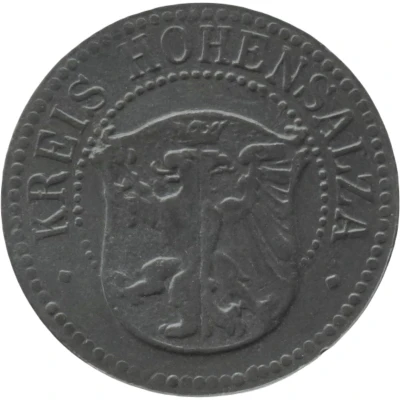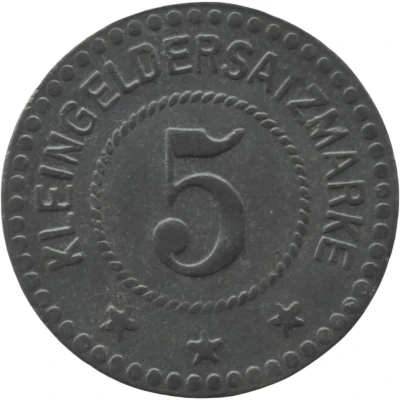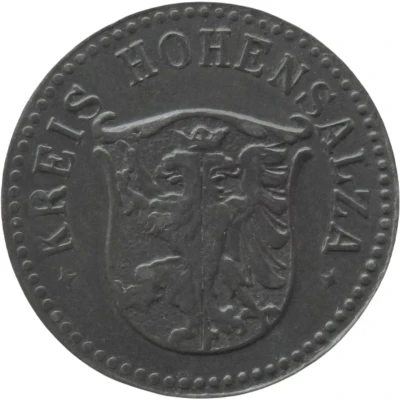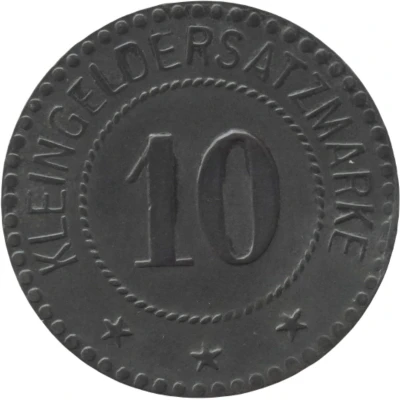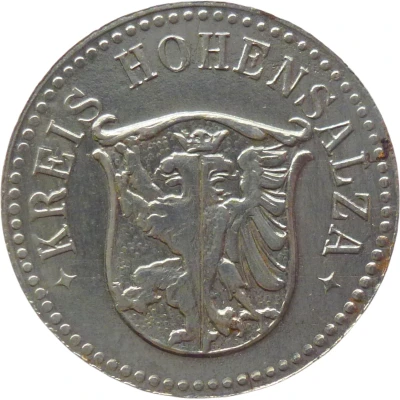
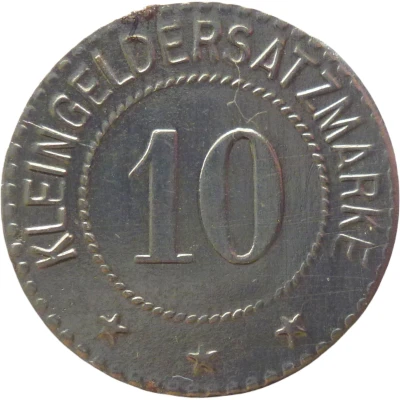

© Willem63 (CC BY-NC-SA)
10 Pfennigs - Hohensalza ND
| Iron | 2.4 g | 20.0 mm |
| Issuer | District of Hohensalza (Posen) (Prussian province of Posen) |
|---|---|
| Type | Standard circulation coin |
| Value | 10 Pfennigs (10 Pfennige) (0.10) |
| Currency | Mark (1914-1924) |
| Composition | Iron |
| Weight | 2.4 g |
| Diameter | 20.0 mm |
| Thickness | 1.1 mm |
| Shape | Round |
| Technique | Milled |
| Orientation | Medal alignment ↑↑ |
| Demonetized | Yes |
| Updated | 2024-10-04 |
| Numista | N#342377 |
|---|---|
| Rarity index | 95% |
Reverse
Pearl rim, legend surrounding rope circle with denomination centered
Script: Latin
Lettering:
KLEINGELDERSATZMARKE
10
★ ★ ★
Edge
Plain
Interesting fact
The Hohensalza 10 Pfennigs coin was minted during a time of great economic and political change in Prussia. The coin was issued in 1919, just after the end of World War I, when Germany was facing significant economic challenges, including hyperinflation and a large national debt. Despite these challenges, the coin was made of iron, which was a relatively inexpensive material at the time, and it weighed only 2.4 grams, making it a lightweight and portable option for everyday transactions. This coin is a fascinating example of how currency can reflect the economic and political conditions of a particular time and place.
